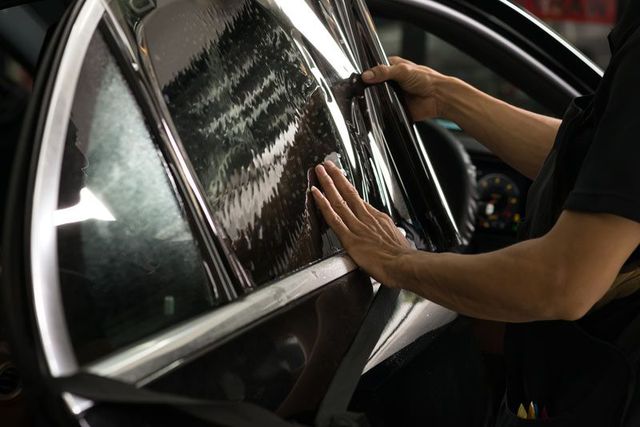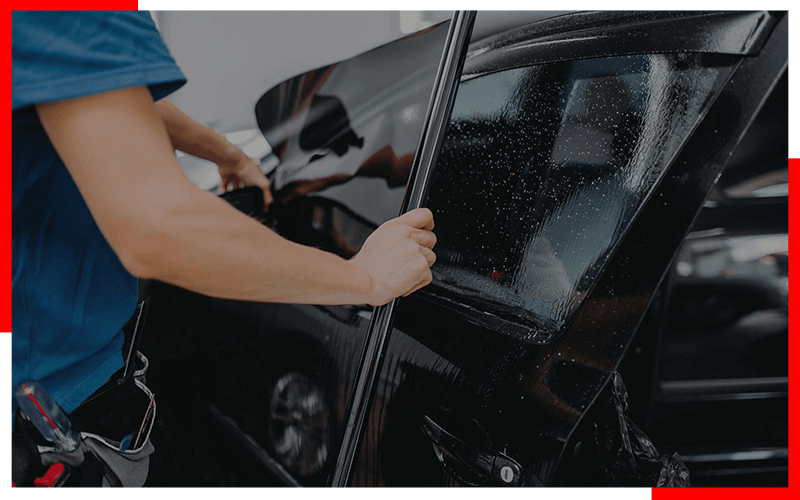How window tinting Can Help in reducing Glare and Boost Convenience
Checking Out the Various Kinds of Window Color for Cars and Their Advantages

Colored Window Tint
Colored home window color is a prominent option amongst auto proprietors looking for to improve privacy and reduce glow while keeping a fashionable look. This kind of tint is created by incorporating color right into the sticky layer, which is then put on the home windows of the automobile. The main appeal of dyed home window tint depends on its ability to give a cosmetically pleasing look without sacrificing capability.
Among one of the most significant benefits of dyed home window tint is its ability to obstruct dangerous UV rays, helping to protect both travelers and the car's interior from sunlight damage. In addition, this tint effectively lowers glare, contributing to a more comfortable driving experience, especially throughout brilliant daytime conditions. The deepening of home window color likewise adds a layer of privacy, making it more difficult for outsiders to see inside the car.
Nonetheless, it is necessary to note that while dyed home window tint supplies many benefits, it may not offer as much heat being rejected as various other sorts of tints. Additionally, its longevity can be impacted by exposure to extended sunshine, possibly causing fading with time. In general, dyed home window tint stays a favored choice for those prioritizing aesthetics and fundamental sunlight defense.
Metalized Window Tint
Metalized window color stands for an advanced option for vehicle owners looking to boost both performance and looks. One of the main advantages of metalized window color is its exceptional heat denial capacities, which can considerably decrease the indoor temperature level of an automobile.
Furthermore, metalized colors use enhanced resilience contrasted to dyed movies, making them immune to fading and scratching. This long life ensures that the color maintains its performance and appearance with time, supplying long-term worth.
Additionally, metalized home window tint can improve privacy and security by making it extra challenging for outsiders to see inside the lorry. The reflective high quality of the color can also hinder potential burglary, as valuables are much less visible (window tinting). While it may disrupt some electronic signals, such as general practitioner or cell phone reception, the total benefits make metalized window color a compelling selection for lots of car owners
Ceramic Home Window Tint
Providing innovative technology and unequaled efficiency, ceramic home window tint has actually become a leading selection for discerning vehicle owners. This ingenious movie is made up of innovative ceramic fragments that offer considerable warm denial while maintaining clarity and exposure. Unlike standard colors, ceramic home window tint does not rely upon metal or color, which can disrupt digital signals from tools such as GPS and cell phones.
One of the standout benefits of ceramic window tint is its exceptional UV defense. It obstructs up to 99% of hazardous ultraviolet rays, thus securing both the automobile's inside and its owners from sunlight damages. Furthermore, this kind of color boosts personal privacy without endangering presence, making it a sensible alternative for day-to-day motorists and deluxe automobiles alike.
Ceramic home window color additionally flaunts durability; it is immune to fading and damaging, making certain durable efficiency. Its non-reflective nature implies it does not trigger glare, contributing to much safer driving conditions (window tinting). For those looking for a costs color option that integrates looks with performance, ceramic window color attracts attention as a remarkable option, supplying boosted comfort and protection on the roadway
Carbon Home Window Tint
When it involves home Visit Website window tinting options, carbon home window tint has obtained appeal for its blend of efficiency and cost. This kind of color is composed of carbon fragments, which offer a distinctive matte coating that improves the aesthetic charm of cars. Among the main benefits of carbon window color is its capability to block a substantial amount of unsafe UV rays, securing both the car's inside and its residents from skin damages and fading.
Furthermore, carbon home window tint uses excellent warmth rejection residential or commercial properties, lowering the requirement for excessive a/c and boosting fuel effectiveness. Unlike colored tints, carbon tints do not discolor over time, preserving their performance and appearance for several years. This sturdiness makes them a sensible choice for cars and truck proprietors seeking long-lasting worth.
Moreover, carbon window tint is non-metalized, which suggests it does not interfere with digital signals, making it suitable for cars furnished with general practitioner, Bluetooth, and other wireless innovations. The equilibrium of price, efficiency, and aesthetic allure has developed carbon window tint as a recommended option for numerous car owners. Eventually, it works as a dependable remedy for those seeking to improve convenience while guaranteeing style.
Factory Tint
Manufacturing facility tint, likewise understood as OEM color, refers to the tinting that is put on vehicle windows during the manufacturing process. This kind of color is usually incorporated right into the glass itself, using a consistent look and constant degrees of shading across all home windows. The primary function of manufacturing facility tint is to lower glow and enhance passenger comfort while offering a degree of UV defense.

While manufacturing facility color provides basic advantages, it may not provide the very same level of warmth being rejected or privacy as higher-grade aftermarket colors. Vehicle proprietors seeking enhanced performance may consider added tinting alternatives, while still valuing the visual charm and performance factory tint gives.
Conclusion

Nonetheless, it is important to keep in mind that while dyed window tint supplies countless advantages, it might not provide as much warmth denial as various other kinds of colors. For those looking for anonymous a premium tint solution that combines visual appeals with functionality, ceramic home window tint stands out as a premium option, delivering improved comfort and defense on the roadway.
When it comes to window tinting choices, carbon window tint has gained popularity for its see this site mix of performance and cost.Manufacturing facility tint, also recognized as OEM tint, refers to the tinting that is applied to car windows during the manufacturing process. The exact degree of tint can differ depending on the vehicle producer and design, with some automobiles including extra significant tint on back home windows than on front windows.